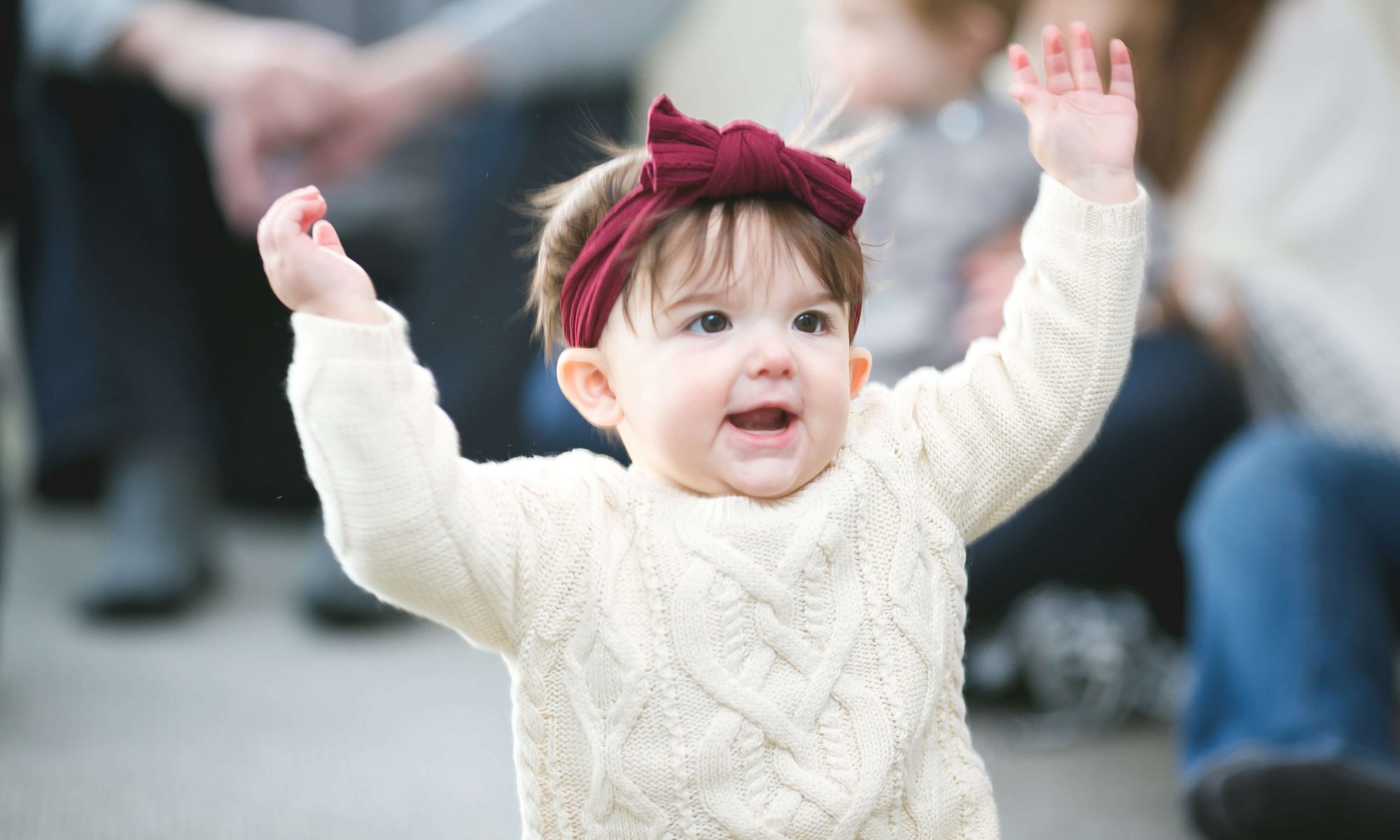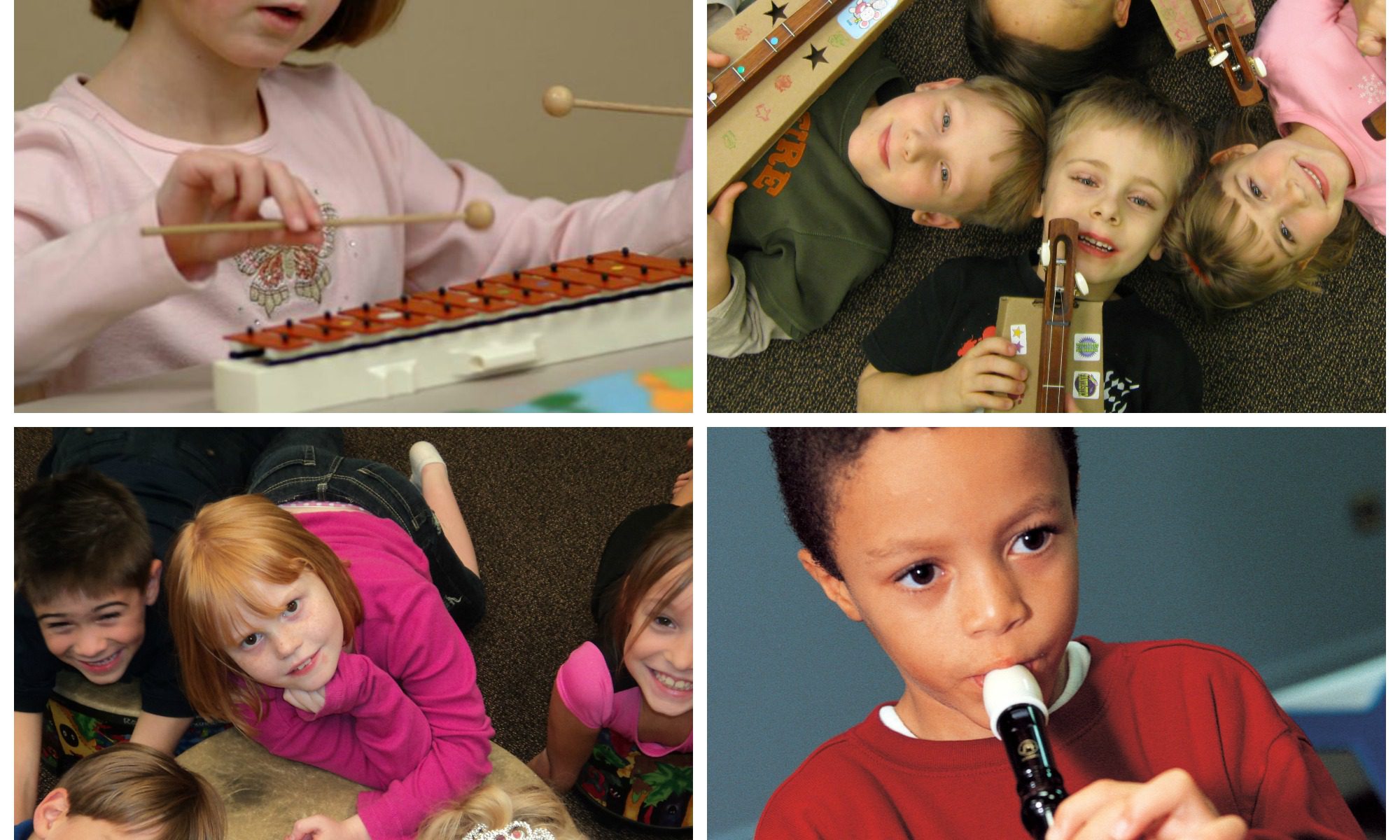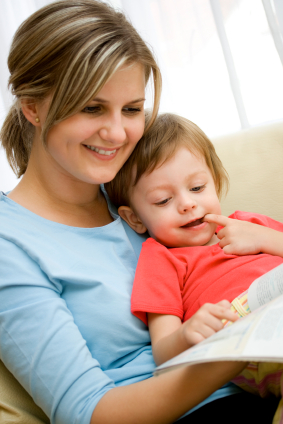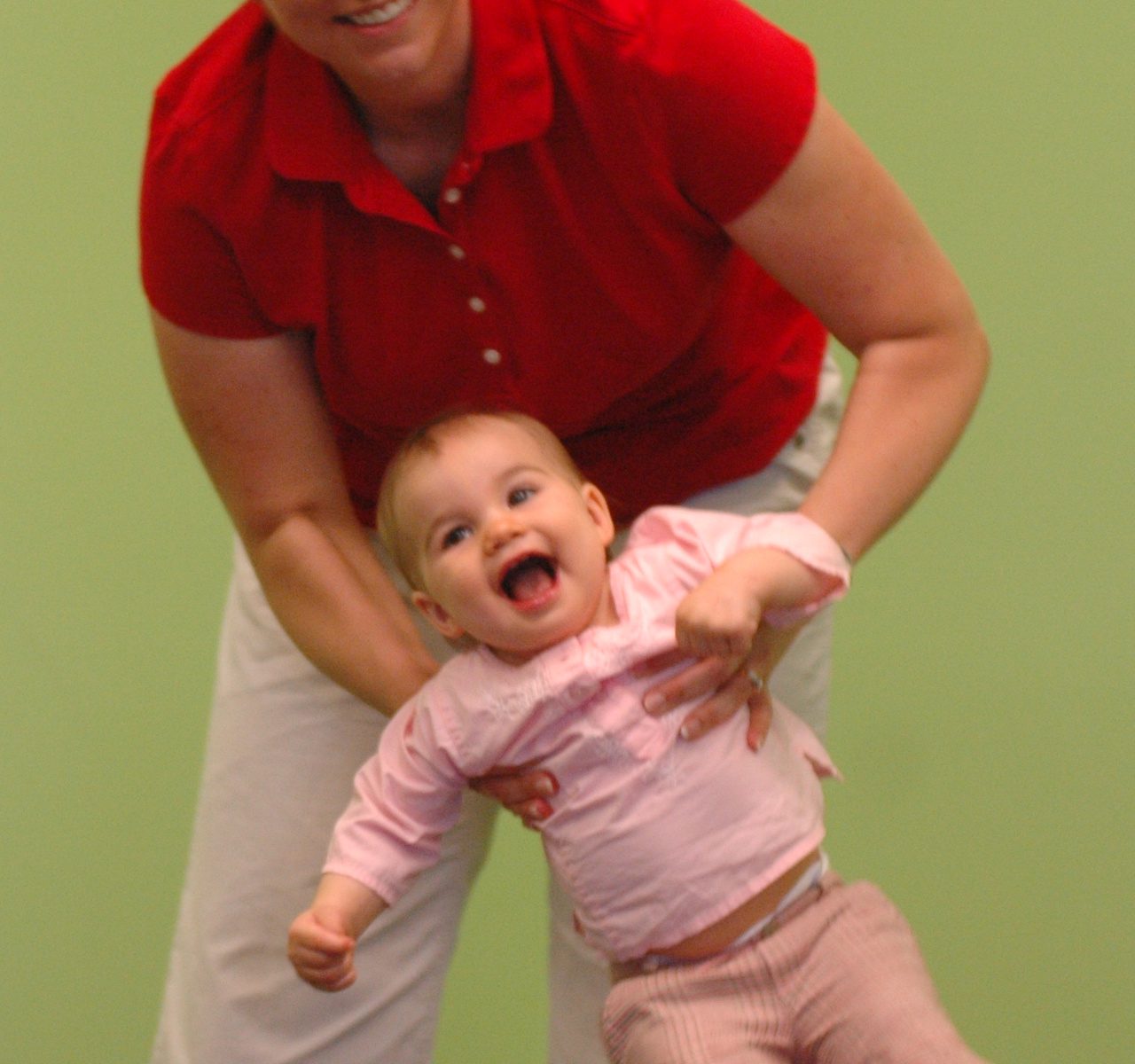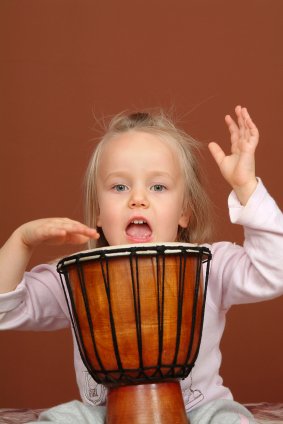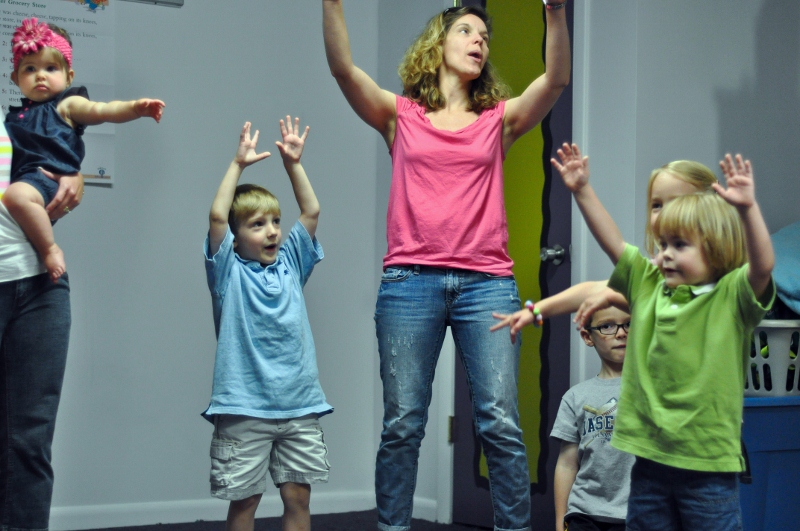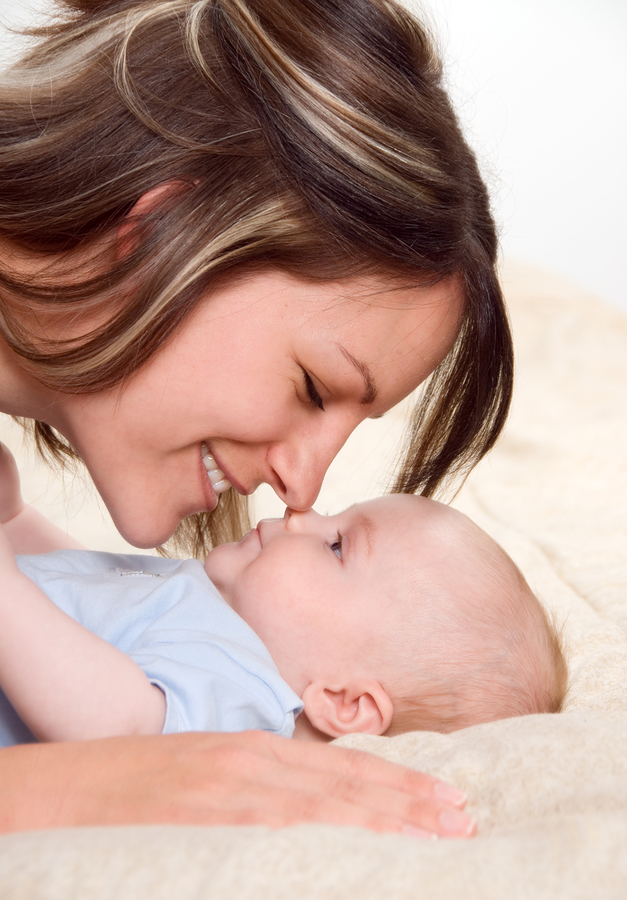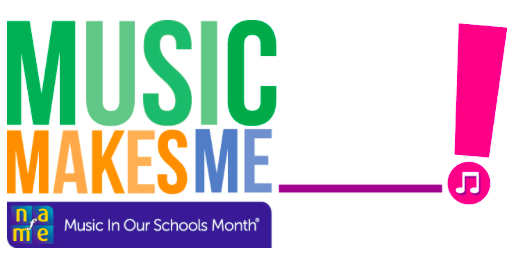Stress. We all deal with it from time to time….and friends, so do our kids. Don’t forget – we have a lifetime of experience in managing stress – and even then we can have a hard time with it. Our kids deal with stress, too…and they are stress novices. It’s up to us to help them develop the skills and methods to cope with stress in their young lives. As it turns out, and this is in no way by accident, music and movement, the very things at which we are experts, are fantastic ways to alleviate stress. Science lights the way. Let’s check it out!
Music & Movement Benefits: The Color of Music
 Ever heard of a dulcimer, a didgeridoo, or a dun dun? Our Kindermusik students have! By exploring a variety of instruments, the children hear, see, and experience a variety of sounds – scratchy sounds, booming drum sounds, ringing sounds, trickling sounds, and more. And not just on Uncommon Instrument Awareness Day (which happens to be today, by the way!). Musically speaking, the distinctive quality of these sounds is called “timbre.”
Ever heard of a dulcimer, a didgeridoo, or a dun dun? Our Kindermusik students have! By exploring a variety of instruments, the children hear, see, and experience a variety of sounds – scratchy sounds, booming drum sounds, ringing sounds, trickling sounds, and more. And not just on Uncommon Instrument Awareness Day (which happens to be today, by the way!). Musically speaking, the distinctive quality of these sounds is called “timbre.”
As your child experiences the variety of sounds he/she can make with musical instruments and everyday objects, he or she is developing the listening vocabulary necessary for sound discrimination preceding language. In fact, Kindermusik builds on your child’s sound discrimination skills throughout their Kindermusik years. Here are just a few examples:
BABIES
In our babies music classes, our focus is on exposing your baby to a variety of timbres to build a base for his/her listening vocabulary to develop. Developing a “vocabulary of sound” at a very young age not only helps children better tune in to the subtle distinctions of both music and speech, but also encourages them to try to make those sounds for themselves with instruments or voice.
TODDLERS
In our toddlers music classes, your child is introduced to a variety of timbres related to animals, transportation, home, and everyday object sounds. The children are also exposed to the timbres of wooden instruments, metal instruments, and shaker instruments. We use these experiences to begin the process of teaching your child how to develop discriminating listening skills.
PRESCHOOLERS
In our preschoolers music classes, we explore the timbres of specific rhythm and orchestra instruments( i.e. such as resonator bars, slide whistles, clarinets, and trombones), teaching your child to learn to identify these timbres as well as discriminate the timbres of voices – male, female, child, children, etc. While learning these skills your child is also taught to hear in layers; in other words, to listen to many things at the same time.
BIG KIDS
As your child progresses to our music classes for big kids, we introduce all the families in the orchestra. Along the way, your child will learn the distinctive sound of over twenty orchestra and keyboard instruments. Plus they’ll learn about and listen to instruments from all around the world. Pretty impressive!
 Come see all the fun and learning that happens with all of the many different instruments we use in Kindermusik classes every week! Try a class for free… and then enroll so that you can enjoy the instrumental variety in class and at home each week.
Come see all the fun and learning that happens with all of the many different instruments we use in Kindermusik classes every week! Try a class for free… and then enroll so that you can enjoy the instrumental variety in class and at home each week.
Compiled by Theresa Case, who has an award-winning Kindermusik program at Piano Central Studios in beautiful upstate South Carolina.
Music & Movement Benefits: Reading with Babies
 “You may have tangible wealth untold: caskets of jewels and coffers of gold. Richer than I you can never be… I had a mother read to me.” – Strickland Gillilan, The Reading Mother
“You may have tangible wealth untold: caskets of jewels and coffers of gold. Richer than I you can never be… I had a mother read to me.” – Strickland Gillilan, The Reading Mother
Reading aloud to a child is the most powerful way to prepare her for success in reading. . In her book, Reading Magic, author Mem Fox explains that “…the more language a child experiences through books and conversation with others, the more advantaged socially, educationally, and in every way that child will be for the rest of his or her life.” That’s some pretty powerful motivation for reading aloud – plus you get the cuddles and the memories too!
Tips for reading with babies
Begin introducing books at about 4 months of age.
This is about the age when babies become interested in objects – like books! At first vinyl and cloth books will be best since babies learn by putting things in their mouths. Your little one will be ready for board books at about 6 months of age.
Have realistic expectations.
Even a few minutes in your lap engaged with a book should be considered a success! Don’t worry… As your child grows, so does their attention span. And when it comes to early reading experiences, it’s okay to let your child take the lead. At this age, it still counts as “reading” if they are opening/closing the book, stacking books, or even just looking at a few of the pictures on a page.
Establish a routine.
By around 1 year of age, you can establish a regular reading routine – after breakfast, before nap time, after bath time – whatever is best for your child. By now, your child may even have a favorite book that they like to read over, and over, and over…. and over again. That’s okay – repetition strengthens the brain!

BONUS! For more great ideas for reading with your baby, check out this free activity from Kindermusik @Home: “Reading” with Baby
Music and Movement Benefits: The Power of the Vestibular System
 “The vestibular system controls the sense of movement and balance. From birth to about 15 months, the vestibular system is very active as the child gains a sense of gravity and knowledge of the physical environment through movement. Rocking, swaying, and movement which rotates the head stimulates the vestibular system, stimulating the brain for new learning.” – Smart Moves, by Carla Hannaford.
“The vestibular system controls the sense of movement and balance. From birth to about 15 months, the vestibular system is very active as the child gains a sense of gravity and knowledge of the physical environment through movement. Rocking, swaying, and movement which rotates the head stimulates the vestibular system, stimulating the brain for new learning.” – Smart Moves, by Carla Hannaford.
Activating learning through movement
The vestibular system is the “vestibule” or “entryway” for learning into the brain. By stimulating the vestibular system, we are helping your child’s brain get ready to learn. By intentionally stimulating the vestibular system during your baby’s early years, your child becomes even more aware of the physical environment through movement. Research shows that vestibular stimulation is not only tied to “alertness” but also to a child’s language development.
A parent’s insights can give a child an academic advantage
Understanding how children learn in the early years and what activates that learning is vital to understanding how children will learn and progress through school later on, according to developmental psychologist Dr. Katherine Towney. This is precisely the reason that Kindermusik educators are so fond of sharing the benefits and the reasons for what we do in class. We believe that parents are children’s first and best teacher, and the more you know and understand about your child, the better learner you can help him/her become.
Why we move, rock, dance, and sway in a Kindermusik class
Here’s a brief of overview of just how we activate the vestibular system – and a child’s learning – in our Kindermusik classes:
Babies: Using and labeling movements like twisting, swaying, turning, and rocking.
Toddlers: Helping the children learn to move confidently and creatively on their own – with mom, dad, grandma, or nanny near by, of course.
Preschoolers: Introducing a whole new vocabulary of movement and joyfully exploring all of those new words and ways to learn.
Big Kids: Keeping the movement in our feet and whole bodies inspires the children as they are also learning to read, write, and compose music.
Music and Movement Benefits: What's Your Tempo?
 What is TEMPO you ask? Simply put, tempo is the speed of the music. Fast, slow, and everything in-between!
What is TEMPO you ask? Simply put, tempo is the speed of the music. Fast, slow, and everything in-between!
But why is TEMPO so important?
There is a tempo in every sport your child will play, in every speech, every talk, every meeting your child will hold, and of course, in music. Here’s where being in a Kindermusik class is so valuable – your child’s Kindermusik classroom experiences with tempo will later translate into critical skills that cross into every aspect of your child’s life – music, sports, academics, dance, gymnastics, art, drama, and more!
Tempo at Home
And that’s not all! Even at home, you can use tempo to keep your child engaged in an activity, supporting both increased attention span and cognitive repetition. For example, you can repeat a song or rhyme many more times with your child if you vary the tempo, and each time we repeat the activity we strengthen the new neural connections in your child’s brain, helping to create retained learning.
How do kids learn about TEMPO?
First, little ones must FEEL it (baby music classes), then they can later PRODUCE it (toddler music classes). Next, they can UTILIZE their sense of timing (preschooler music classes) so that by the time they are in our big kids classes they will be able to sense tempo as a group in ENSEMBLE play, and further develop their organizational skills for home, school, and beyond!

Want to see how Kindermusik can benefit your child? Try a free class today and see how your child will learn and grow with music.
Music & Movement Benefits: Why We Rock, Bounce, Jump & Dance
 Kindermusik is as much about movement as it is about music. Ask any educator or parent – there’s no need to go to the gym on Kindermusik day! That’s because we know that children learn best by doing – it’s called experiential learning. And now a new study highlighted in Science Daily demonstrates just how powerful the doing-learning-remembering connection really is. There really is such a thing as “motor memory!”
Kindermusik is as much about movement as it is about music. Ask any educator or parent – there’s no need to go to the gym on Kindermusik day! That’s because we know that children learn best by doing – it’s called experiential learning. And now a new study highlighted in Science Daily demonstrates just how powerful the doing-learning-remembering connection really is. There really is such a thing as “motor memory!”
Multiple research studies prove what Kindermusik has capitalized on for a long time – movement is KEY to learning. In fact, the movement we do in our Kindermusik classes is essential for the children in many ways.
The powerful, but happy, combination of movement and music develops:
- The Vestibular System.
A well-developed vestibular system provides emotional security, good muscle tone, develops auditory language processing, and visual-spatial processing. All this while you’re having fun dancing!
- Neural Pathways.
Moving in a variety of ways gives your child a chance to ‘see the world’ from many perspectives, thus strengthening neural pathways, which carry messages from your child’s mind, guiding her senses and motor skills.
- Fine Motor Skills.
During the first part of life, we’re learning to walk, so gross motor activities dominate the child’s movement. Now she can focus on activities that encourage the development of fine muscles, so she can increase skills that require finger and hand movements such as putting together a simple puzzle, painting with a paintbrush, turning a page of a book or stringing beads.
- Physical Confidence.
Body awareness is important in the development of the child’s physical confidence. This developmental goal may be met by engaging in movement activities which focus on body part movement, whole body movement in one place, and whole body movement while traveling in space.
- Creativity and Imagination.
Listening and responding to music and movement activities helps develop pretend play skills while also helping your child assimilate music and movement concepts such as fast, slow, loud, quiet, bumpy, smooth, straight and curvy.
- Thinking Skills.
While in motion, the brain acts like a flight simulator, constantly inventing, moving mental models to project onto a changing world. This is an extraordinary mentally complex operation which builds thinking skills.
Movement is truly the key to the kind of learning that sticks and to the kind of joyful interaction that leads to a lifelong love of music and a lifetime of benefiting from the rich foundation of an early childhood music and movement program like Kindermusik.

Come move, sing, dance, play, and learn with us! Try a FREE Kindermusik class today and see how music will move you… and your child.
Music & Movement Benefits: Music, Relaxation, and Nap Time
Today, on National Napping Day, we here at Kindermusik International are celebrating the benefit of learning to relax, one of the best gifts you can give your child. (We wish we could celebrate in true form by taking a nap ourselves, but alas, duty calls… and we digress.) Whether there’s simply a need to unwind or whether it’s time to settle down for a nap, music can be an important part of either of these childhood routines.
Just as your child needs stimulation and engagement in age-appropriate activities, she also needs periods of relaxation. This is one of the reasons why many of our Kindermusik classes for babies and toddlers specifically include Quiet Time or Relaxation Time ritual in every class. Lights are lowered; adult and child cuddle up; and we all settle in to enjoy a lovely recording together.
 But a “quiet time” isn’t only for young children; it’s also beneficial for older children as well. And times set aside for relaxation are just as important at home as they are in the Kindermusik classroom. Creating regular quiet times at home gives your child practice in learning to calm herself, slow her pace, and relax. Plus it helps her develop a valuable lifelong skill – the skill of learned relaxation.
But a “quiet time” isn’t only for young children; it’s also beneficial for older children as well. And times set aside for relaxation are just as important at home as they are in the Kindermusik classroom. Creating regular quiet times at home gives your child practice in learning to calm herself, slow her pace, and relax. Plus it helps her develop a valuable lifelong skill – the skill of learned relaxation.
Slow, gentle music (like Kindermusik’s You Are My Sunshine) can best provide an environment most conducive to relaxation. Some families have created a favorites playlist of all their favorite Kindermusik Quiet Time music. Or find new favorites to download at play.kindermusik.com. Search by style for lullabies. Find what your child likes, and then create a beloved and soothing routine by playing music whenever it’s time for your child to relax or go to sleep.
And so, in honor of National Napping Day, we encourage you to take a few moments to relax and listen to some beautiful music with your child today. You’ll love how good it makes you – and your child – feel!
Music in Our Schools Brings Harmony to Learning

Each March, we join with the National Association for Music Education for the observance of Music in Our Schools Month to help raise awareness of the importance of music education for all children.
With over 35 years of experience in using music to reach children of all abilities, we know without a doubt that music belongs in our schools. Why? Because that’s where our children are!
Music opens the door to learning
When young children are consistently engaged by music in an age-appropriate, socially accepting environment, they benefit at so many levels. Here are just a few…
- Early Literacy Skills. They gain the phonological processing, spoken language, and comprehension skills that are the foundation of reading and early literacy skills.
- Quantitative. They build the spatial-temporal and reasoning skills required for math, science, and engineering.
- Social-Emotional. They develop social and emotional skills that are essential for school readiness—like the ability to regulate their responses and relate to others in complex ways.
- Physical. By moving and dancing to music and playing simple instruments, children improve their gross and fine motor skills.
- Creative. Activities that encourage freedom within a fun and friendly structure spark children’s creativity and provide inspiration.
- And of course, they develop a lifelong love of music.
Music brings harmony to learning…and school
 In the early childhood classroom, the teacher, the paraprofessional, and the children all contribute to the learning process and environment. This experiential environment where the learning process is shared by everyone in the group is called “social constructivism.” Music creates a learning environment where every participant contributes and takes away something unique based on their own experiences, both inside and outside the classroom. For example, in our early literacy curriculum, ABC Music & Me, our classes provide children with ample time to reflect, compare, make choices, express opinions and preferences, and engage in problem solving activities together. This teaches children not only the lesson focus but it also teaches them how to learn. Plus, these shared experiences create a sense of community, harmony, and even teaches empathy.
In the early childhood classroom, the teacher, the paraprofessional, and the children all contribute to the learning process and environment. This experiential environment where the learning process is shared by everyone in the group is called “social constructivism.” Music creates a learning environment where every participant contributes and takes away something unique based on their own experiences, both inside and outside the classroom. For example, in our early literacy curriculum, ABC Music & Me, our classes provide children with ample time to reflect, compare, make choices, express opinions and preferences, and engage in problem solving activities together. This teaches children not only the lesson focus but it also teaches them how to learn. Plus, these shared experiences create a sense of community, harmony, and even teaches empathy.
What about you?
Why do you think music belongs in our schools? Take a minute to let us know by posting on our Facebook page. In the meantime, listen to children from Public School 22 in Staten Island, New York. Yes, music belongs in our schools. Every child deserves the opportunities that music can bring. We think these children would agree!

